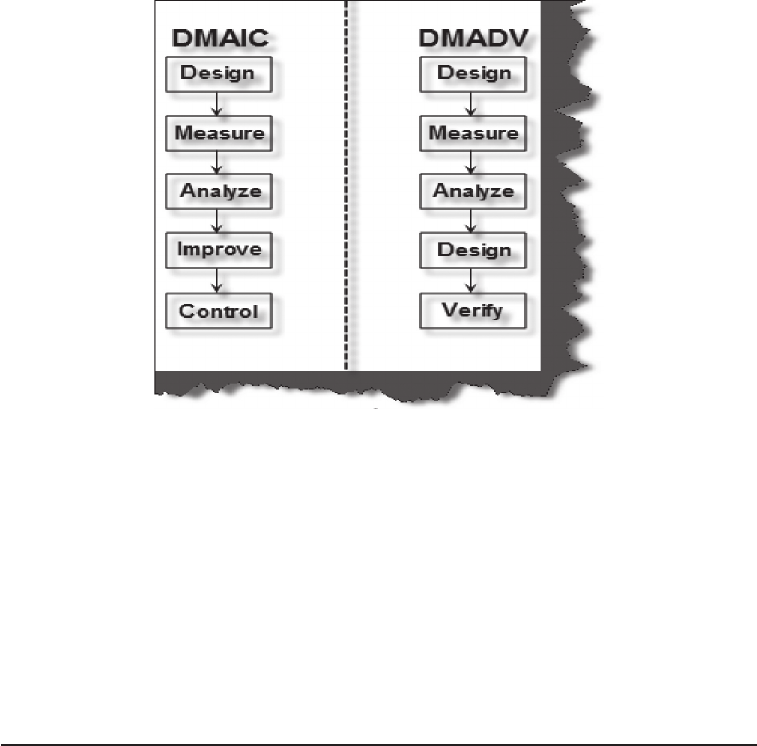
Six Sigma 107
Figure 98 DMAIC and DMADV
Analyze and determine the root cause(s) of the defects.
Narrow the causal factors to the vital few.
Improve the process to eliminate defects. Optimize the vital
few and their interrelationships.
Control the performance of the process. Lock down the gains.
(i) What are exeCutive leaders, Champions, master
BlaCk Belts, green Belts, and BlaCk Belts?
Six Sigma is not only about techniques, tools, and statistics, but also about
people. In Six Sigma there are five key players:
Executive leaders
Champions
Master black belts
Black belts
Green belts
n
n
n
n
n
n
n
n
108 Software teSting interview QueStionS
Let’s try to understand the role of the players step by step.
Executive leaders: They are the main people who actually decide that
we need to do Six Sigma. They promote it throughout the organization and
ensure commitment of the organization. Executive leaders are mainly either
CEOs or from the board of directors. So, in short, they are the people who
fund the Six Sigma initiative. They should believe that Six Sigma will improve
the organization process and that they will succeed. They should ensure that
resources get proper training on Six Sigma, understand how it will benefit
the organization, and track the metrics.
Champions: Champions are normally senior managers of the company. These
people promote Six Sigma mainly between the business users. The champion
understands Six Sigma thoroughly, and serve as a coaches and mentors, select
the project, decide objectives, dedicate resources to black belts, and remove
obstacles which come across black belt players. Historically, champions always
fight for a cause. In Six Sigma they fight to remove black belt hurdles.
Master black belts: This role requires the highest level of technical capability
in Six Sigma. Normally organizations that are just starting up with Six Sigma
will not have master black belts. So normally outsiders are recruited. The
main role of the master black belt is to train, mentor, and guide. He helps the
executive leaders in selecting candidates, finding the right project, teaching
the basics, and training resources. They regularly meet with black belts and
green belts training and mentoring them.
Black belts: Black belts lead a team on a selected project which has to
be showcased for Six Sigma. They are mainly responsible for finding out
variations and seeing how these variations can be minimized. Master black
belts basically select a project and train resources, but black belts are the
people who actually implement them. Black belts normally work in projects
as team leaders or project managers. They are central to Six Sigma as they
are actually implementing Six Sigma in the organization.
Green belts: Green belts assist black belts in their functional areas. They are
mainly in projects and work part-time on Six Sigma implementation. They
apply Six Sigma methodologies to solve problems and improve processes at
the bottom level. They have just enough knowledge of Six Sigma and they
help to define the base of Six Sigma implementation in the organization. They
assist black belts in Six Sigma implementation.
..................Content has been hidden....................
You can't read the all page of ebook, please click here login for view all page.
